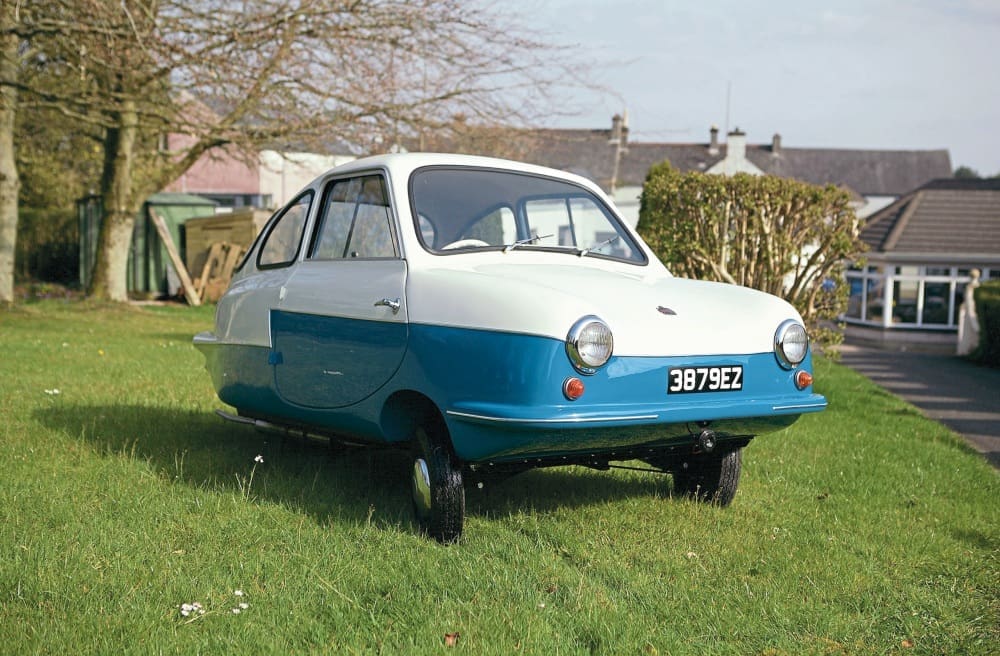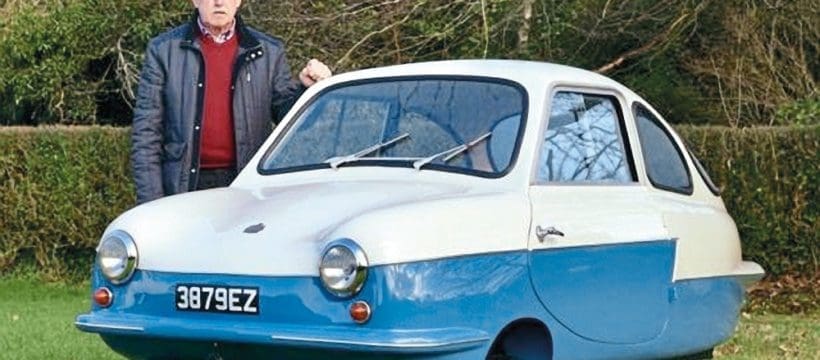
The Nobel 200 is classed as a trike and was produced in Belfast, Northern Ireland, during the late 1950s.
Approximately 1500 were made, of which there are believed to be only 30-40 models surviving. The one featured here has been lovingly restored by Winston Phair.
The roots behind the Nobel brand begin in Vienna during 1922, when designer Jakob Knoblauch was born. He eventually moved to the UK, adopting the name York Noble. In May 1956 he formed the company Noble Motors Ltd, which became the UK concessionaires for the Heinkel Bubblecar and remained as such until 1958.
In December 1957, Noble had set up another company, York Noble Industries Ltd, and it was this company that was tasked with producing a suitable replacement vehicle for the loss of the Heinkel franchise.

As a consequence a number of variations were produced, including the Nobel 200 limousine (a hard-top saloon), and the Nobel 200 ‘Vicky’ (a van or pick-up variant with detachable canvas top and side panels). These vehicles would be made available either as do-it-yourself kits or as ready-to-drive vehicles. The vehicles were, in fact, re-designed versions of the German Fuldamobil S-7, for which a production licence was obtained.
The flamboyant York Noble (his name is often misspelled as being the same as the car) assembled a group of sub-contractors to build it, including the Bristol Aeroplane Company, Rubery Owen, Sachs, and local suppliers for the smaller parts. The assembly was carried out by aircraft and shipbuilders Short Brothers and Harland of Belfast.

German Fuldas were imported whilst the production line got underway. The plan was for Short Brothers to build the entire vehicle with the exception of the 191cc Sachs engine, which had four forward gears and four reverse gears! This was an engine that was also used in the Messerschmitt bubblecar and the Prior Viscount scooter (albeit with different gearing). In the Nobel the engine was rear mounted and fed fuel through a three-gallon petrol tank. It ran on eight-inch wheels and came with a spare wheel as standard. Top speed was an impressive 40mph (for the day) with two persons on board.
The vehicles were produced in a two-tone paint finish (colours divided by the Nobel’s distinctive Z-shaped moulding), a solid roof, and they were mostly in right-hand drive form. When production ended in 1959, Short Brothers sold the body moulds on.
WINSTON’S PRIDE & JOY

The lovingly restored example featured here belongs to 70-year-old Winston Phair from Irvinestown in County Fermanagh. Winston bought the car over 30 years ago for the princely sum of £250, but he only started to restore it in February 2018, completing it 11 months later. He carried out the majority of the restoration himself and sent the engine to a specialist to be rebuilt.
A local car painter was entrusted with the two-tone paint scheme similar to the factory finish. Keen to enrich his knowledge on the Nobel brand, Winston is keen to hear from anyone who worked on the production line in the Belfast factory, or from other Nobel owners. You can give him a call on 07798 924142.


